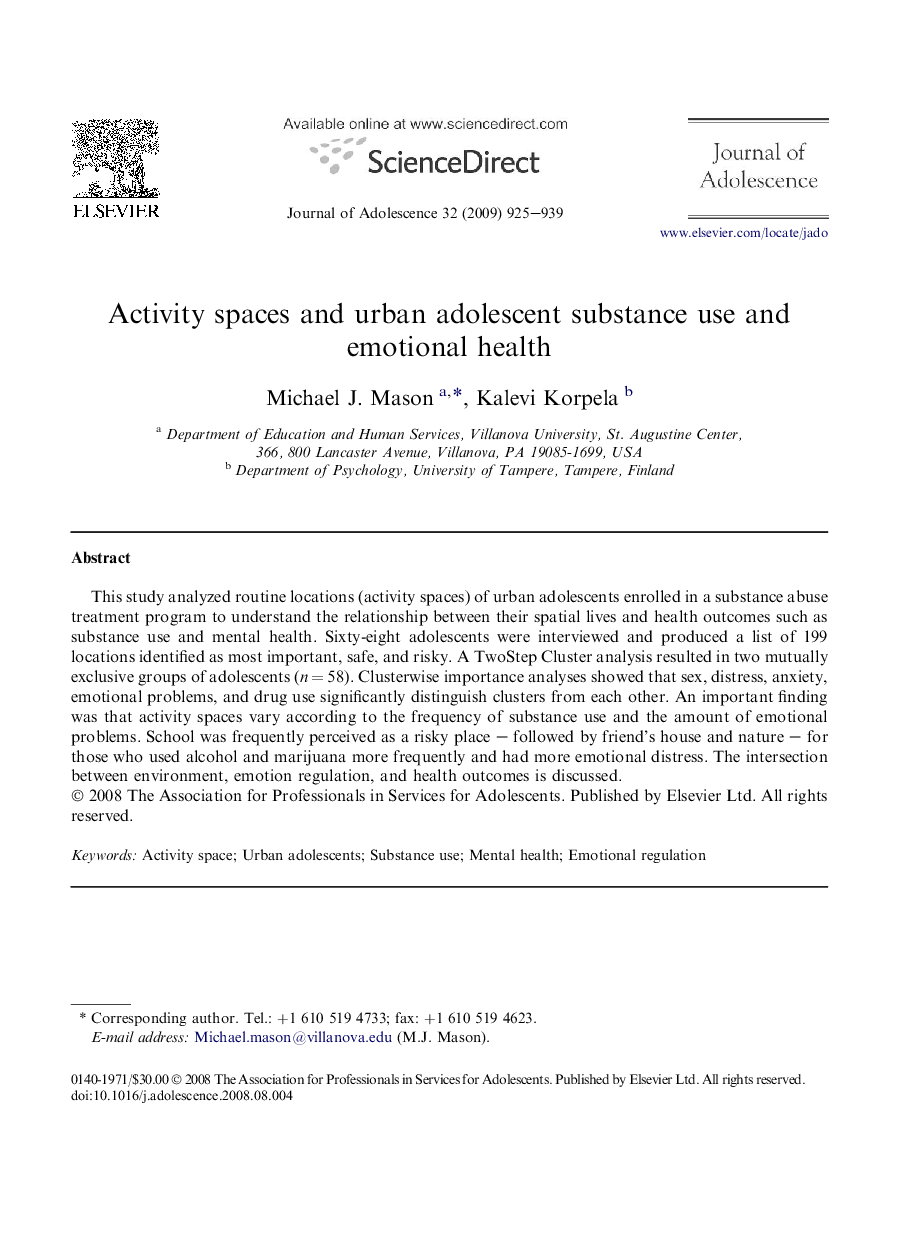| Article ID | Journal | Published Year | Pages | File Type |
|---|---|---|---|---|
| 881267 | Journal of Adolescence | 2009 | 15 Pages |
This study analyzed routine locations (activity spaces) of urban adolescents enrolled in a substance abuse treatment program to understand the relationship between their spatial lives and health outcomes such as substance use and mental health. Sixty-eight adolescents were interviewed and produced a list of 199 locations identified as most important, safe, and risky. A TwoStep Cluster analysis resulted in two mutually exclusive groups of adolescents (n = 58). Clusterwise importance analyses showed that sex, distress, anxiety, emotional problems, and drug use significantly distinguish clusters from each other. An important finding was that activity spaces vary according to the frequency of substance use and the amount of emotional problems. School was frequently perceived as a risky place – followed by friend's house and nature – for those who used alcohol and marijuana more frequently and had more emotional distress. The intersection between environment, emotion regulation, and health outcomes is discussed.
